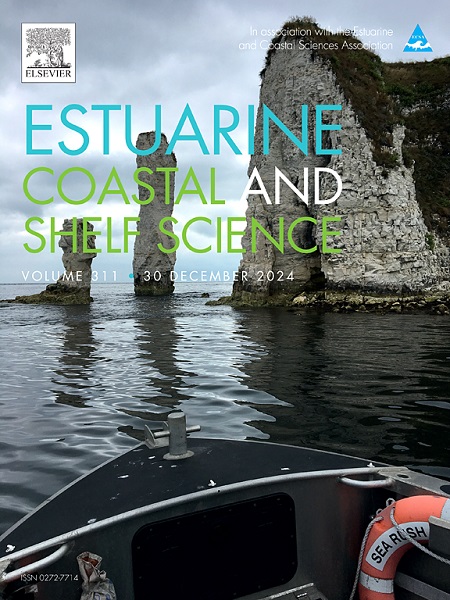马来西亚半岛西海岸中潮间带泥滩对滨鸟的生态重要性
IF 2.6
3区 地球科学
Q1 MARINE & FRESHWATER BIOLOGY
引用次数: 0
摘要
马来西亚半岛西海岸位于东亚-澳大拉西亚飞行路线内,是候鸟和候鸟的重要中途停留地,它们利用食物供应的季节性波动为长途旅行补充燃料。沿海地区,特别是潮间带和泥滩,是滨鸟重要的觅食地。然而,他们在马来西亚半岛西海岸使用泥滩的具体模式仍然知之甚少。本研究以雪兰莪中北部海岸和德禄-达瓦尔-瓜木达海岸两个重要的沿海鸟类和生物多样性地区为研究对象,研究了不同潮间带泥滩区滨鸟的栖息地偏好和觅食模式。中间区域有大量觅食的滨鸟,这表明人们偏爱这个区域,因为它是潮间带、泥滩和浅水区的最佳组合,既不会被淹没太久,也不会长时间暴露在阳光下,为无脊椎动物提供了最佳的环境。将滨鸟分为空间专门性、部分专门性和通才性三种,其中有5种专门性分布在泥滩的下、中、上部。一些滨鸟物种,如欧亚鸻(Numenius arquata)和赤腹鹬(Arenaria interpres),被认为是潮汐追随者,因为它们的生态模式受到潮汐循环的显著影响。观察到的滨鸟种群对中潮滩的偏好,以及该地区濒临灭绝的物种,如诺德曼绿脚鹬(Tringa guttifer)的存在,突出了保护泥滩栖息地的重要性,特别是中潮滩,并强调了在保护规划中需要详细的生态见解。本文章由计算机程序翻译,如有差异,请以英文原文为准。

Ecological importance of middle intertidal mudflats for shorebirds on the west coast of Peninsular Malaysia
The west coast of Peninsular Malaysia, within the East Asian–Australasian Flyway, is an important stopover site for migratory and passage shorebirds to refuel for their long journeys by taking advantage of seasonal fluctuations in food availability. Coastal areas, particularly intertidal zones and mudflats, are vital foraging grounds for shorebirds. However, their specific patterns of mudflat use along the west coast of Peninsular Malaysia remain poorly understood. This study examined the habitat preferences and foraging patterns of shorebirds in different intertidal mudflat zones by focusing on two coastal Important Bird and Biodiversity Areas – the North-Central Selangor Coast and Teluk Air Tawar-Kuala Muda Coast. The middle zone supported a high abundance of foraging shorebirds, suggesting a preference for this zone due to its optimal combination of intertidal areas, mudflats, and shallow water zones, being neither submerged for too long nor exposed to the sun for extended periods, and providing an optimal environment for invertebrates. Shorebirds were classified into spatial specialist, partial specialist, and generalist species, with five species specialising in the lower, middle, or upper mudflat zone. Some shorebird species, such as the Eurasian Curlew (Numenius arquata) and Ruddy Turnstone (Arenaria interpres), are considered tidal followers, as their ecological patterns were significantly influenced by the tidal cycle. The observed shorebird populations' preference for middle tidal flats, along with the presence of endangered species, such as Nordmann's Greenshank (Tringa guttifer), in this zone, highlights the critical importance of conserving mudflat habitats, particularly middle tidal flats, and underscore the need for detailed ecological insights in conservation planning.
求助全文
通过发布文献求助,成功后即可免费获取论文全文。
去求助
来源期刊
CiteScore
5.60
自引率
7.10%
发文量
374
审稿时长
9 months
期刊介绍:
Estuarine, Coastal and Shelf Science is an international multidisciplinary journal devoted to the analysis of saline water phenomena ranging from the outer edge of the continental shelf to the upper limits of the tidal zone. The journal provides a unique forum, unifying the multidisciplinary approaches to the study of the oceanography of estuaries, coastal zones, and continental shelf seas. It features original research papers, review papers and short communications treating such disciplines as zoology, botany, geology, sedimentology, physical oceanography.

 求助内容:
求助内容: 应助结果提醒方式:
应助结果提醒方式:


